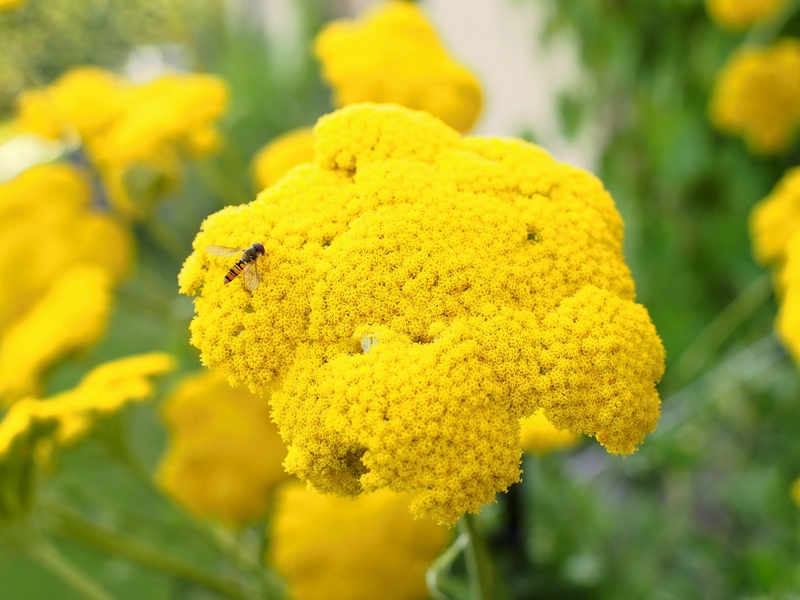Step-by-Step Guide to Building the Best Garden Seating Areas
Posted on 19/09/2025
Step-by-Step Guide to Building the Best Garden Seating Areas
Imagine enjoying your morning coffee in a tranquil haven, surrounded by blooming flowers and gentle breezes -- all from the comfort of your very own garden seating area. Creating a perfect garden seating area is not only a rewarding DIY project but also adds value and beauty to your outdoor living space. In this comprehensive and practical guide, we will walk you through all the essential steps to building the best garden seating spots, ensuring lasting comfort, style, and functionality.

Why Build a Garden Seating Area?
Garden seating areas are more than just a place to rest. They become a focal point in your landscape, providing a space for relaxing, entertaining, dining, or simply enjoying nature. Whether you have a small backyard or a sprawling lawn, strategically designed garden seating can transform your outdoor space into a personalised retreat.
- Enhances outdoor living experience
- Boosts property value and curb appeal
- Encourages social gatherings and relaxation
- Creates multipurpose spaces for various activities
- Showcases your personal style and creativity
Planning Your Ideal Garden Seating Area
Every successful project starts with thoughtful planning. Consider the following key factors when designing your best garden seating areas:
1. Assess Your Space and Requirements
- Measure the available space: Note the dimensions and shape of your garden.
- Identify sunny and shaded spots: Map out areas with ideal sunlight, shade, views, and privacy.
- Define the purpose: Will you use the seating for dining, reading, socializing, or meditation?
- Check the ground level: Is the area flat, sloped, damp, or rocky?
- Consider access and flow: Plan clear pathways for easy movement to and from the seating area.
2. Choose the Style of Your Outdoor Seating Area
- Rustic: Natural materials like logs, tree stumps, or reclaimed wood benches.
- Modern: Sleek furniture, minimalistic lines, neutral colors.
- Traditional: Classic iron benches or stone seats surrounded by formal planting.
- Coastal/Relaxed: Adirondack chairs, swings, hammocks, or bean bags.
3. Select the Right Materials
Durability, weather-resistance, and maintenance should guide your choice of materials for garden seating. Popular options for outdoor seating areas include:
- Wood: Teak, cedar, and eucalyptus are resilient and develop charming patinas.
- Metal: Wrought iron, aluminium, and stainless steel are sturdy and contemporary.
- Stone: Granite, sandstone, and slate offer natural elegance and permanence.
- Composite: Weather-resistant, low-maintenance, and available in various colors and textures.
Step-by-Step Instructions for Creating the Best Garden Seating Areas
Step 1: Determine the Location and Layout
- Observe your garden's microclimate: Pay attention to local wind patterns, sun exposure, and natural views.
- Select a focal point: Place your seating area to optimise views or create intimacy with lush plantings or water features.
- Visualise the layout: Sketch a seating plan that allows for comfortable movement and complements existing landscaping.
Step 2: Prepare the Ground
- Clear the area: Remove grass, weeds, rocks, and debris.
- Level the surface: For stability, use a spirit level; for sloped areas, consider terraces or raised platforms.
- Install weed barriers: Landscape fabric helps prevent future weed growth under and around the seating spot.
Step 3: Create a Solid Foundation
- Paving slabs or decking: Ideal for formal and low-maintenance gardens. Lay compacted gravel and sand before installing slabs, bricks, or composite decking.
- Gravel or wood chips: Suitable for informal settings. These allow quick drainage and soften the look of your garden seating area.
- Concrete base: Best for permanent or heavy furniture (such as stone benches).
Step 4: Add Comfortable Furniture and Fixtures
- Choose weatherproof furniture: Opt for cushions and covers made from UV-resistant, water-repellent fabrics.
- Mix seating types: Benches, individual chairs, loungers, and built-in brick or timber seating create flexibility and interest.
- Incorporate tables: Include coffee tables, side tables, or dining tables for functionality.
- Include storage: Benches with lift-up seats or decorative storage boxes keep cushions dry and handy.
Step 5: Integrate Shade and Shelter
A garden seating area should be usable in various weather. Add shelter and shade options:
- Parasols or umbrellas: Quick to install and portable.
- Arbours and pergolas: Provide charming structure that supports climbing plants for additional shade.
- Gazebos or awnings: Ideal for larger gardens or perennial seating zones.
- Lattice screens or trellises: Block wind and create privacy while allowing filtered light.
Step 6: Personalise with Planting and Decor
- Surround with greenery: Mix tall shrubs, fragrant flowers, and ornamental grasses for year-round beauty and privacy.
- Add pots or raised beds: Portable planters let you change up the look and suit smaller gardens.
- Enhance ambience with lighting: Solar lanterns, fairy lights, or integrated LEDs extend usability into the evening.
- Install water features: Fountains or birdbaths create serene atmosphere and attract wildlife.
- Decorative accents: Outdoor rugs, cushions, sculptures, and wind chimes reflect your style.
Inspiring Ideas for Garden Seating Areas
1. Cozy Corner Nooks
Maximise privacy and intimacy by tucking a bench into the corner of your garden beneath a leafy tree or behind climbing roses. Use paving stones and layers of potted plants to create a secretive, tranquil retreat.
2. Fire Pit Social Spaces
Create a feature with a circular gravel base and a built-in fire pit, surrounded by sturdy benches or Adirondack chairs. This layout encourages conversation and warmth well into the evening.
3. Dining Terraces
Elevate your outdoor entertaining by building a raised stone or timber deck with a large table and comfortable seating. Pergolas draped with vines or retractable awnings keep guests cool and shaded.
4. Pergola Lounges
Install a wooden pergola with a daybed or sectional under soft-falling curtains. This design provides partial shade, frame climbing wisteria or jasmine, and offers an elegant, Mediterranean ambience.
5. Contemporary Minimalist Escape
Opt for a clean concrete or composite pad furnished with sleek metal chairs and a low-profile sofa. Use architectural grasses, sculptural planters, and monochrome accents for a modern vibe.
Maintenance Tips for Long-Lasting Garden Seating Areas
- Regular cleaning: Sweep debris, wipe surfaces, and wash outdoor cushions to prevent mildew and stains.
- Seal wood and stone: Apply protective sealants to add weather-resistance and longevity.
- Check fastenings and structure: Tighten loose bolts and inspect for rust or rot each season.
- Protect in off-season: Store textiles and move lightweight furniture into sheds or under covers during winter.

Frequently Asked Questions (FAQs) on Garden Seating Areas
What's the best material for outdoor seating?
Teak wood and powder-coated metal offer a great combination of weather resilience and style. Composite materials are also excellent for low-maintenance gardens.
How can I make my seating area more private?
Use lattice screens, tall planters, hedging, or even outdoor curtains to create a secluded spot in your garden seating area.
What size should a garden seating area be?
It depends on your needs, but even a 2m x 2m area can accommodate a bench and a small table. For dining or large gatherings, aim for at least 4m x 3m of clear space.
Can I create a garden seating zone on a budget?
Absolutely! Repurpose pallets for benches, use gravel instead of paving, or upcycle logs and stumps. Focus on comfy cushions and creative plantings to elevate the space affordably.
Conclusion: Enjoying Your Best Garden Seating Area
By following this step-by-step guide to building the best garden seating areas, you'll create an outdoor sanctuary tailored to your taste, needs, and lifestyle. Whether it's a quiet nook under a tree, a sociable fire pit circle, or an elegant dining terrace, a thoughtfully built garden seating area will enrich your home for years to come. Invite friends over, relax with a book, or simply bask in the beauty of your garden -- the possibilities are as endless as your imagination.
Start planning and let your garden become the ultimate destination for leisure, comfort, and inspiration!

